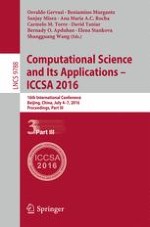2016 | OriginalPaper | Buchkapitel
GLSDock – Drug Design Using Guided Local Search
verfasst von : Sally Chen Woon Peh, Jer Lang Hong
Erschienen in: Computational Science and Its Applications -- ICCSA 2016
Aktivieren Sie unsere intelligente Suche, um passende Fachinhalte oder Patente zu finden.
Wählen Sie Textabschnitte aus um mit Künstlicher Intelligenz passenden Patente zu finden. powered by
Markieren Sie Textabschnitte, um KI-gestützt weitere passende Inhalte zu finden. powered by
